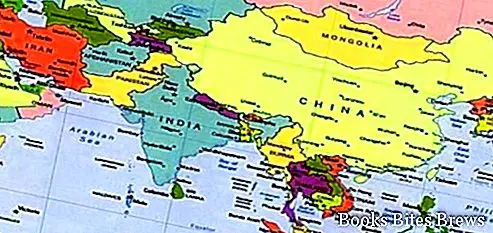A brief summary of Asia geography concerning territory, climate and explorations in this continent.
Geography Asia
The Asian continent is the largest of the earth since its surface occupies about a third of the emerged lands.
Except for some islands of Insulindia, Asia is entirely included in the Northern Hemisphere with the borders marked to the North by the Arctic Ocean, to the South by the Indian Ocean, to the East by the Pacific Ocean, to the West by the Red Sea, from the Mediterranean Sea and the Black Sea.
The Ural mountain range marks the border with Europe which together with Asia is called Eurasia as the only continental mass.
Asia is also connected to Africa through the Suez canal and to America through the Bering Strait, a short stretch of sea between the two continents in the north.
Climate Asia
The climatic situation of Asia is very varied due to the different latitudes affecting its vast territory, the disposition of its mountain ranges, the mitigating influence of the seas and the monsoon regime that affects part of its lands.
The Philippines, Insulindia, Malaysia and Burma are affected by a hot humid equatorial climate; Indochina, Deccan, Sri Lanka enjoy a tropical climate characterized by a temperature excursion and abundant rains during the summer season; Syria and the coast of Asia Minor are affected by a Mediterranean climate.
Explorations in Asia
The first information relating to the Asian territories dates back to Herodotus, at the time of Greek expansion towards the East. The first commercial relations were established in Roman times when Chinese merchants turned their attention to the West.
The first contribution to the knowledge of the Asian continent was given in the ninth century by the travel reports made by Arab merchants and travelers, but in practice the Asian world remained unknown to Europe until the time of the travels of the Franciscan missionary Giovanni di Pian del Carpine and especially the Venetians Polo.
With the opening of the sea route to India, followed by the African circumnavigation made by the Portuguese Vasco da Gama, and with the voyage of Magellan, who landed in the Moluccas in 1521, the Asian continent took on a more precise conformation in the eyes of European researchers who they had an idea about its location and geographic extent.




